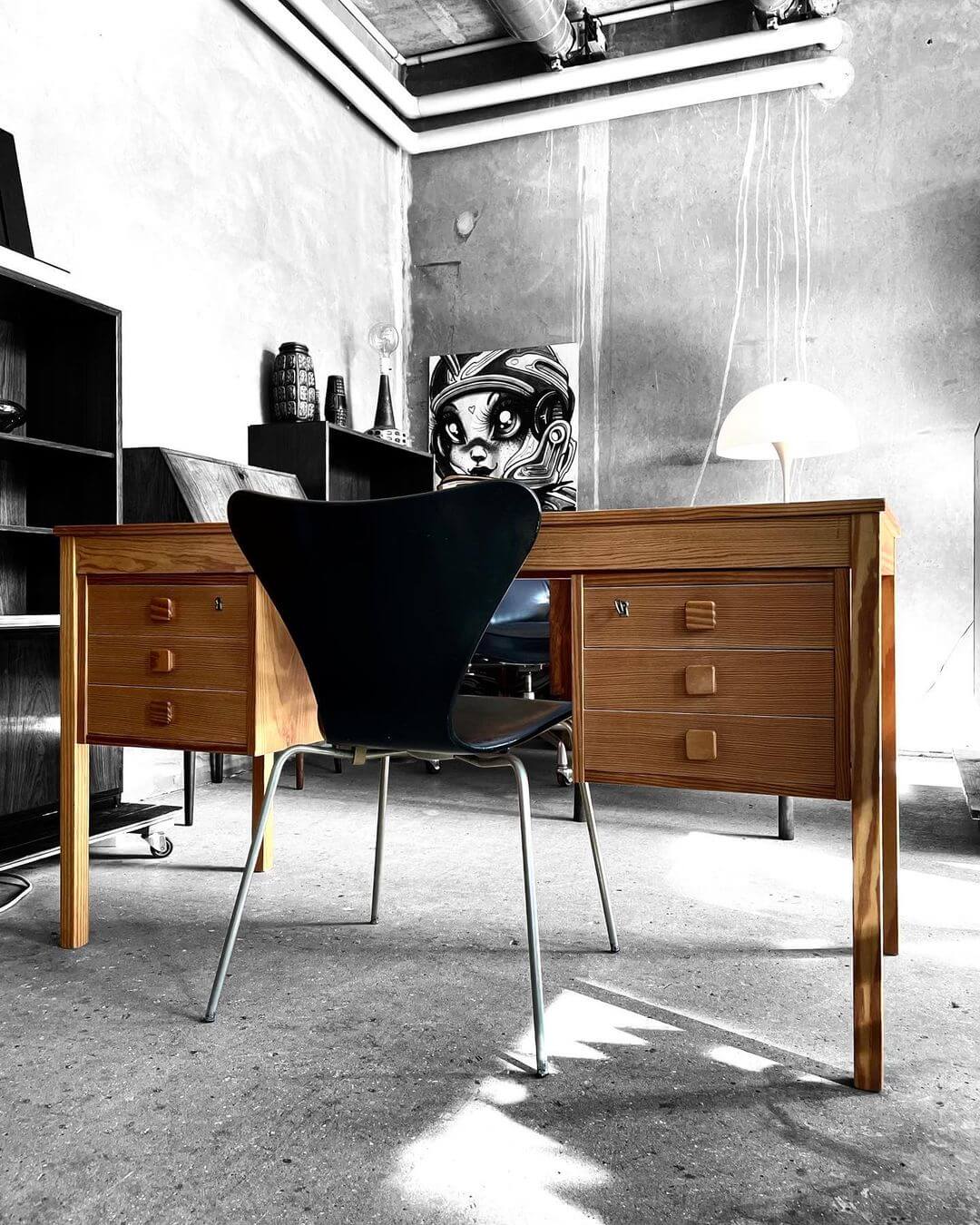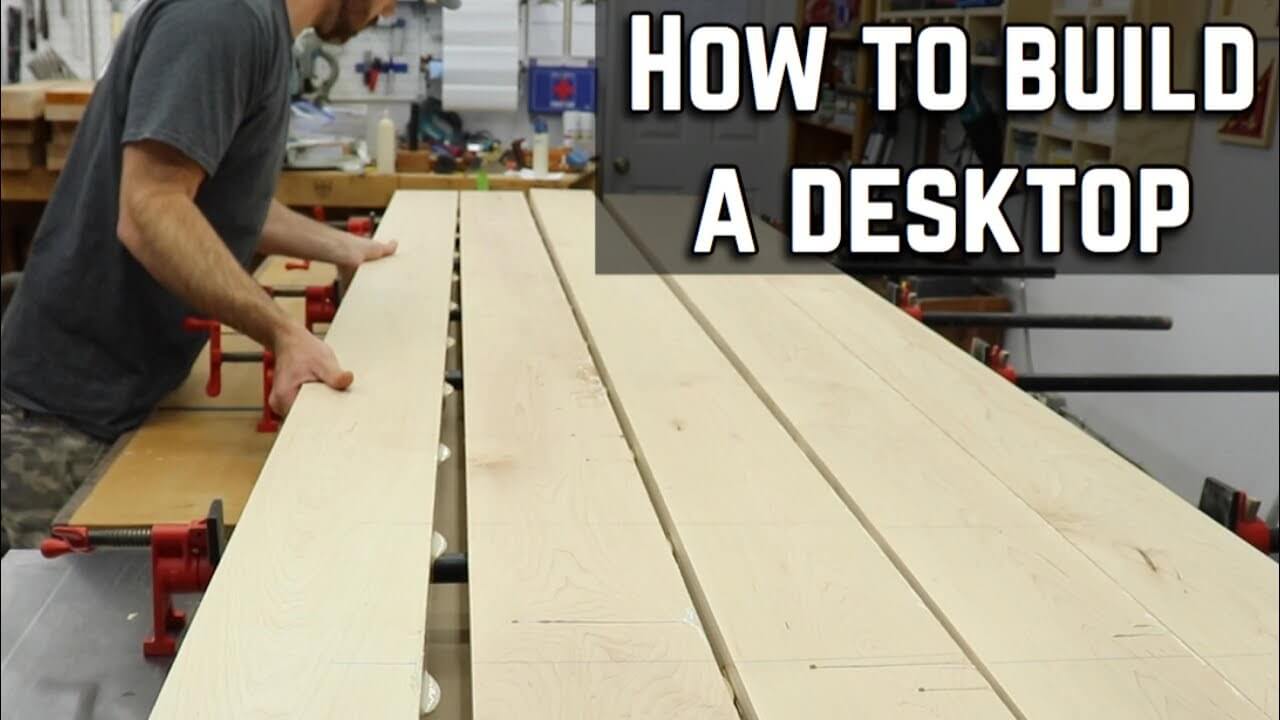Best Wood for Desktops—16 DIY Options to Consider
Are you on the quest to craft a DIY wooden desk that’s not only a feast for the eyes but also stands the test of time?
In a Nutshell:
Selecting the right wood for your desktop depends on factors like durability, color, grain, and cost. For a rich, luxurious look, mahogany and walnut are excellent choices, offering durability and a sophisticated appearance. Pine and birch are great for lighter, budget-friendly options, easy to work with and offering a clean, minimalist aesthetic. Maple and teak provide a balance of strength and beauty, suitable for regular use. For eco-friendly enthusiasts, bamboo and reclaimed wood are sustainable choices with unique textures. Consider your usage needs and aesthetic preferences to pick the right wood, ensuring it complements your space and meets practical requirements.
Best Types of Wood for Desktops
1 | Mahogany
Mahogany is a dense hardwood with a fine, straight grain. It is known for its beautiful appearance and durability and is often used in high-quality furniture and desktops.
Being a dark variety of wood, mahogany is famous for the luxurious and plush appearance it can help provide. Although mainly red-brown in color, there are many variations and distinctions in the different pieces of mahogany, making this a versatile option for your desktop.
Mahogany tends to offer longevity, hardness, and stability to the surface you use it for. It comes with a hardness of 1,070 lbf and includes locked and overlapping grains that lend some coarseness to the surface.
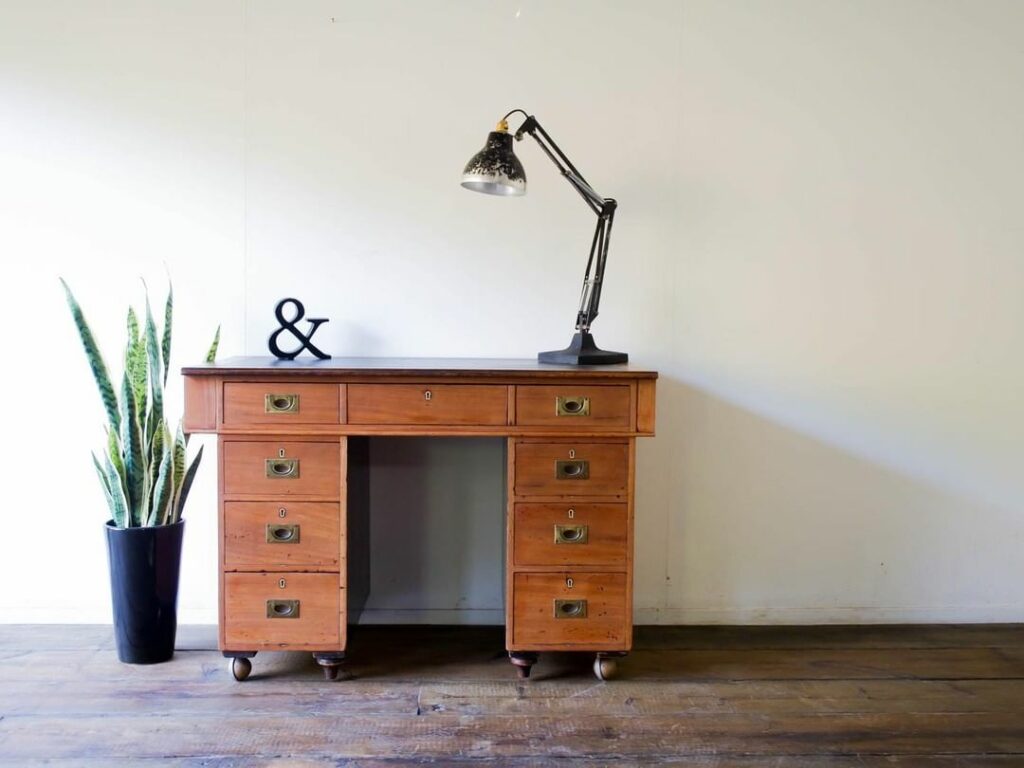
Pros
Cons
2 | Pine
Pine is light in terms of both weight and color. It carries a light brown to tan color, with many kinds of this wood also displaying white, yellow, and cream-like colors.
This kind of variety can provide you with plenty of options to choose from, and it has a smooth, even grain that makes it easy to clean and maintain.
This can also allow you to stain or paint over the wood to achieve a darker color. The knots and grains can also provide plenty of strength and texture to the wood.
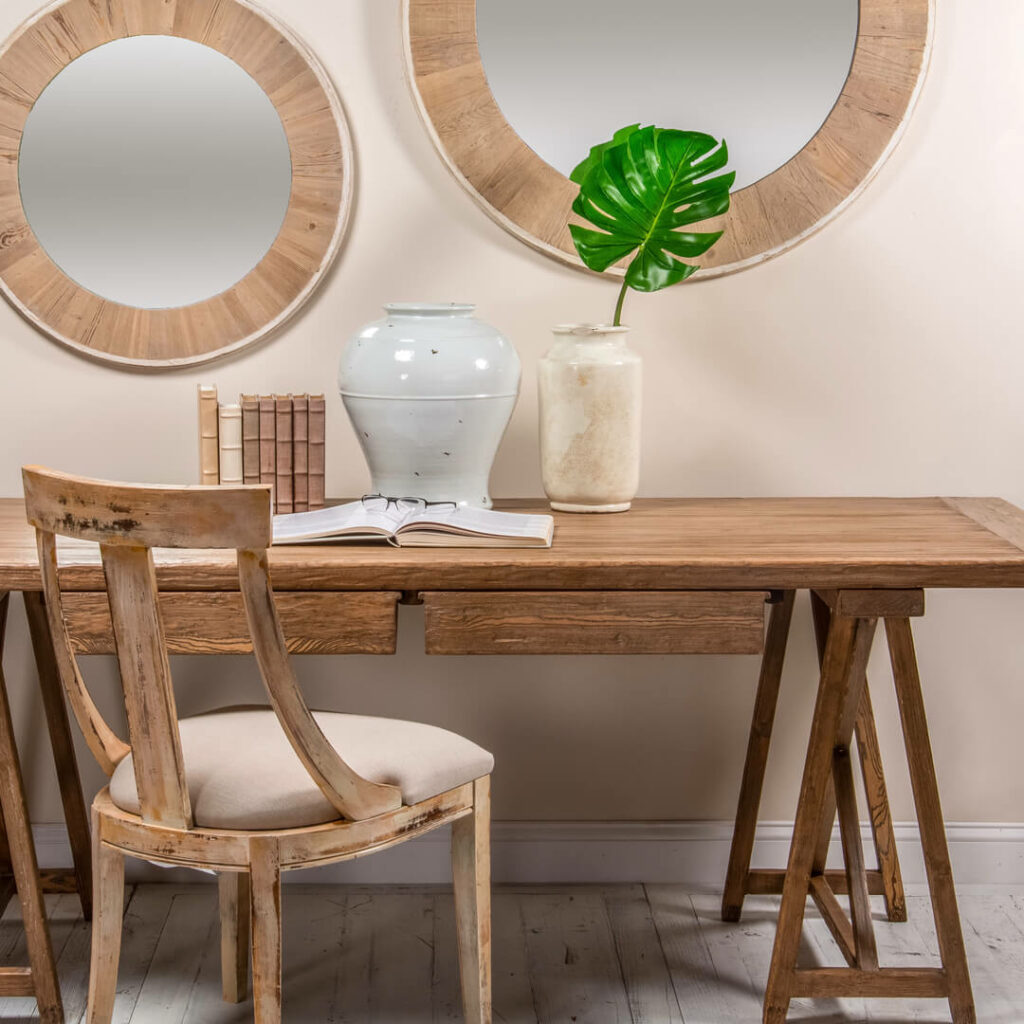
Pros
Cons
3 | Cherry
Cherry is an extremely popular kind of wood when it comes to desktops, mainly due to its rich and dark red color. The grain and texture can considerably enhance the appearance too.
Cherry is a kind of solid wood, although it has quite a low level of density. This can help provide sturdiness and stability while still making it convenient to cut and drill while making your desktop.
Black cherry, in particular, can offer a fine and smooth appearance to your desktop that you can manage without frequent sanding or painting.
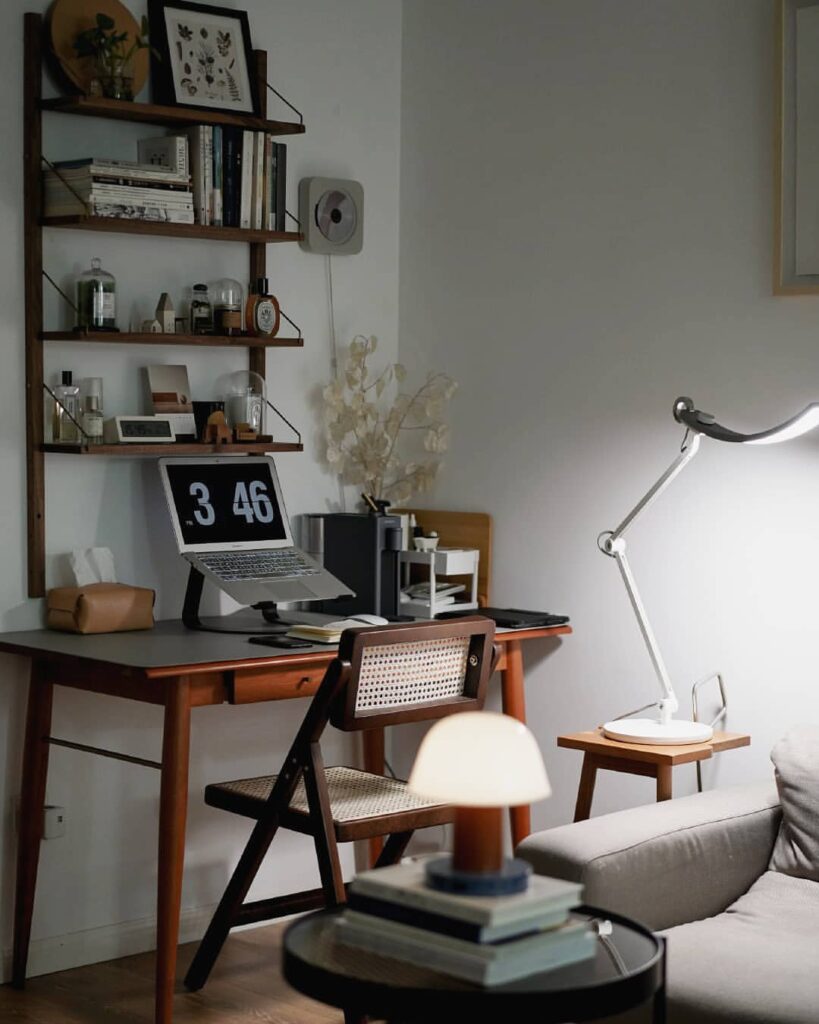
Pros
Cons
4 | Walnut
Walnut wood is rich, deep, and dark in color, often ranging from a cream-like tan color to something that resembles the darker brown of chocolate or cocoa. This can work well for desktops, especially in workplaces that see plenty of different usages.
Walnut is incredibly sturdy and can be a bit heavy to manage, although it can be ideal if you intend to keep your desktop in a single location.
A noteworthy element of walnut is that it can respond well to attempts to shape or alter it. The edges can hold and maintain their shape for a long time.
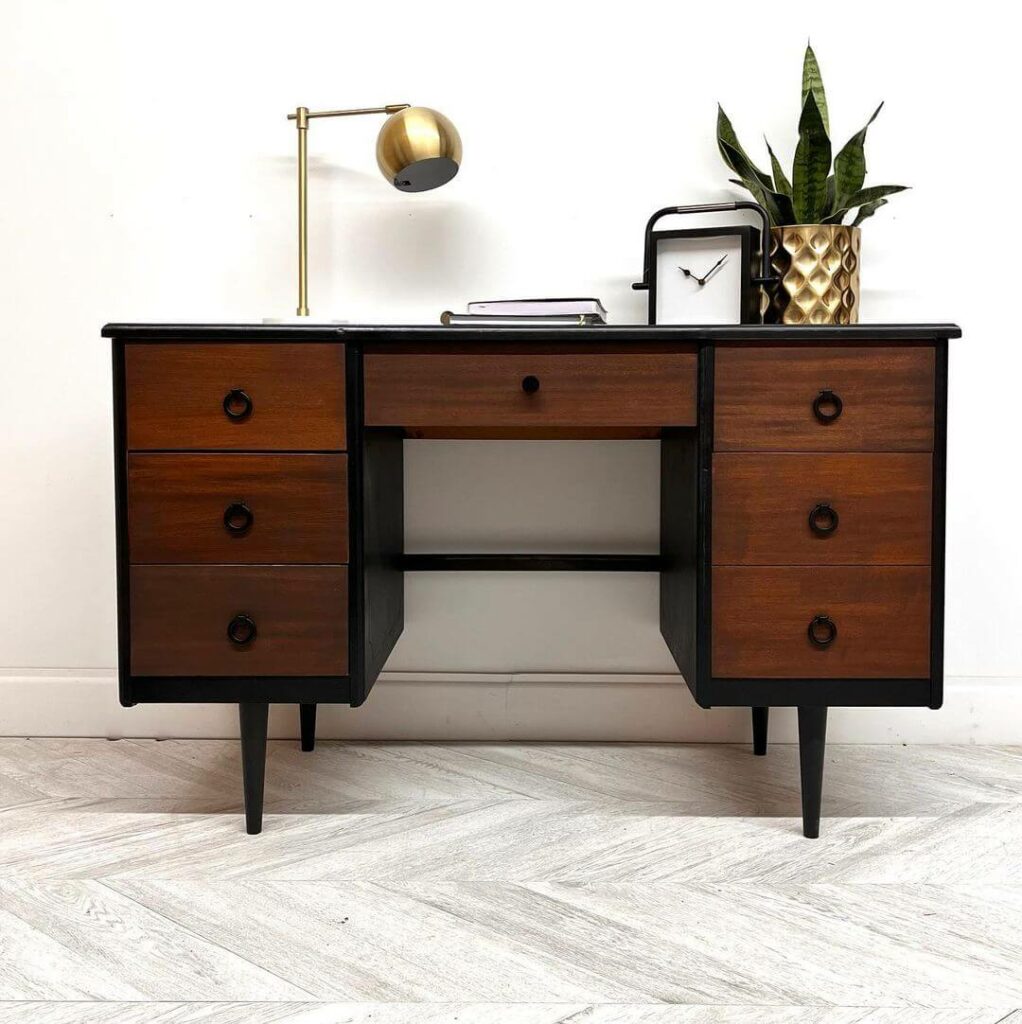
Pros
Cons
5 | Birch
Offering versatility, longevity, and strength, birch can make a reliable wood option for your desktop. With a high strength in terms of both compression and bending, birch can handle quite a bit of weight on top of it without undergoing much damage.
Birch is free from knots and tends to have fine grains that usually result in a smooth and level appearance. Moreover, birch is available in multiple color options like yellow, white, tan, and black.
Given the numerous options in terms of thickness and size, you can opt for pieces that suit your needs.
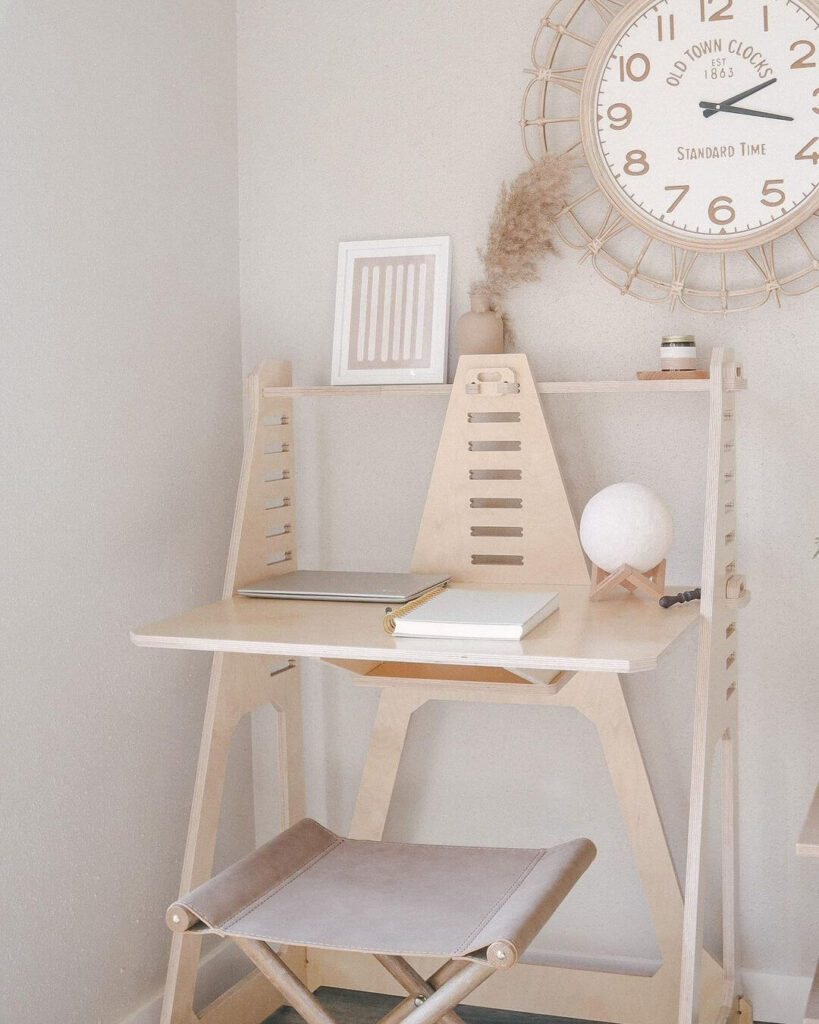
Pros
Cons
6 | Cedar
Cedar is a durable and simple wood option. It is quite easy to cut and work with, making it convenient if you intend to carry out the desktop project on your own.
A softwood with a relatively high strength and density level, cedar can be useful for supporting both weight and movement on your desktop.
Cedar has a light color that can range from tan to a more pinkish brown. In some cases, the grain and texture can also provide a deeper brown to the wood.
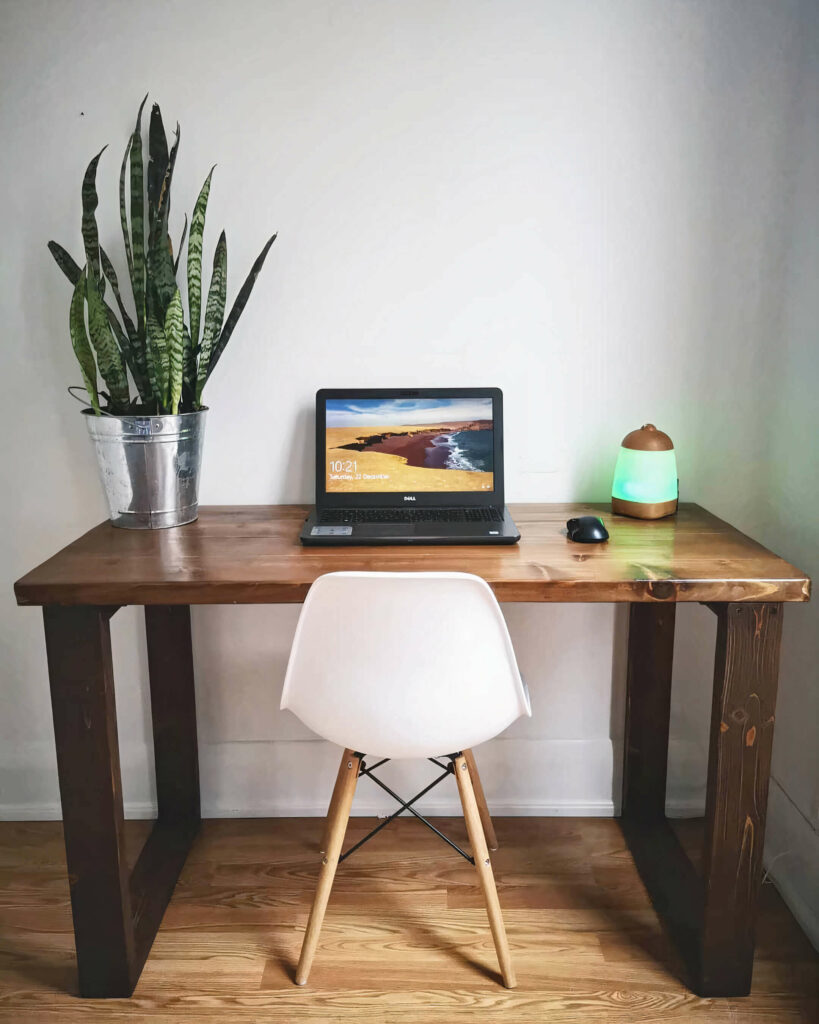
Pros
Cons
7 | Bamboo
Bamboo might look flimsy and light, but it is solid and durable. It makes for one of the most sustainable wood options due to its wide availability, multiple uses, and quick and widespread growth.
Bamboo has a rating of 1,380 lbf on the Janka hardness scale, thus implying that this can make for a sturdy and balanced option for your desktop.
Apart from its efficacy as a stable wood for your desktop, bamboo can also impart plenty of attraction due to its smooth texture and color.
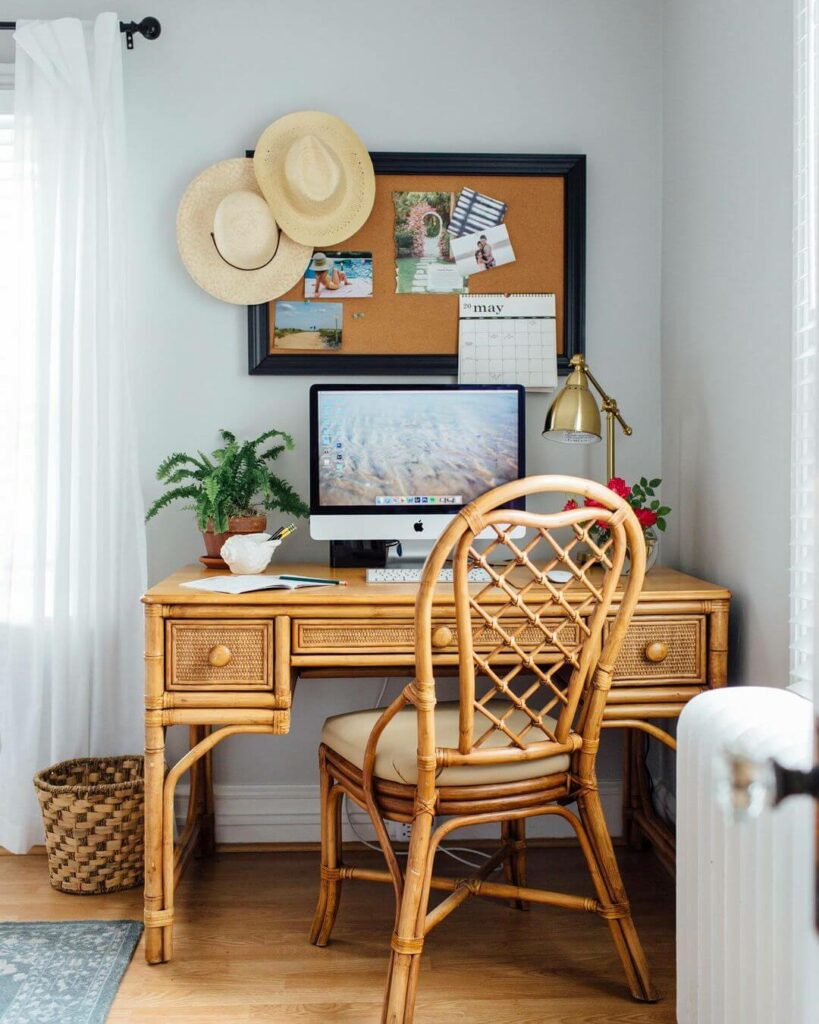
Pros
Cons
8 | Maple
Maple is affordable and cost-effective and can provide fantastic results for your desktop. Coming in a light and creamy color with a fine grain, maple is a preferred choice for many carpenters and woodworkers.
The fact that it is light and practical to work with also makes it quite popular for furniture like chairs and tabletops.
There are various kinds of maple trees, each of which can offer a variety of densities and colors. This can result in a good amount of sturdiness and strength despite the softwood nature of maple.
Maple is sustainable too, due to the wide range of uses that it can provide along with the fact that it can improve air quality.
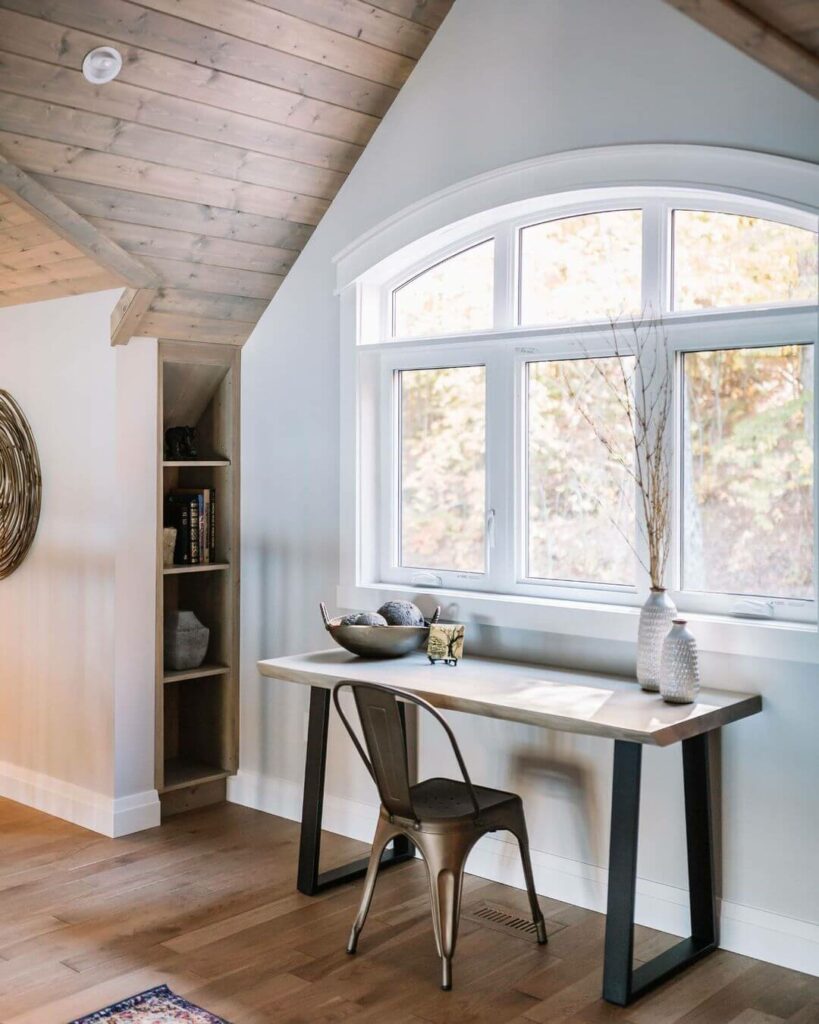
Pros
Cons
9 | Teak
Teak is a hardwood tree with dense and extremely tough wood. Thus, if you wish to build a desktop for frequent and vigorous usage, teak can be a great choice. In fact, teak has a high degree of impenetrability, making it popular for both indoor and outdoor uses.
Teak comes in gorgeous golden-yellow or golden-brown colors that can spruce up the appearance of your desktop while also making it work well with other colors.
Teak also contains many natural oils that can enrich its color.
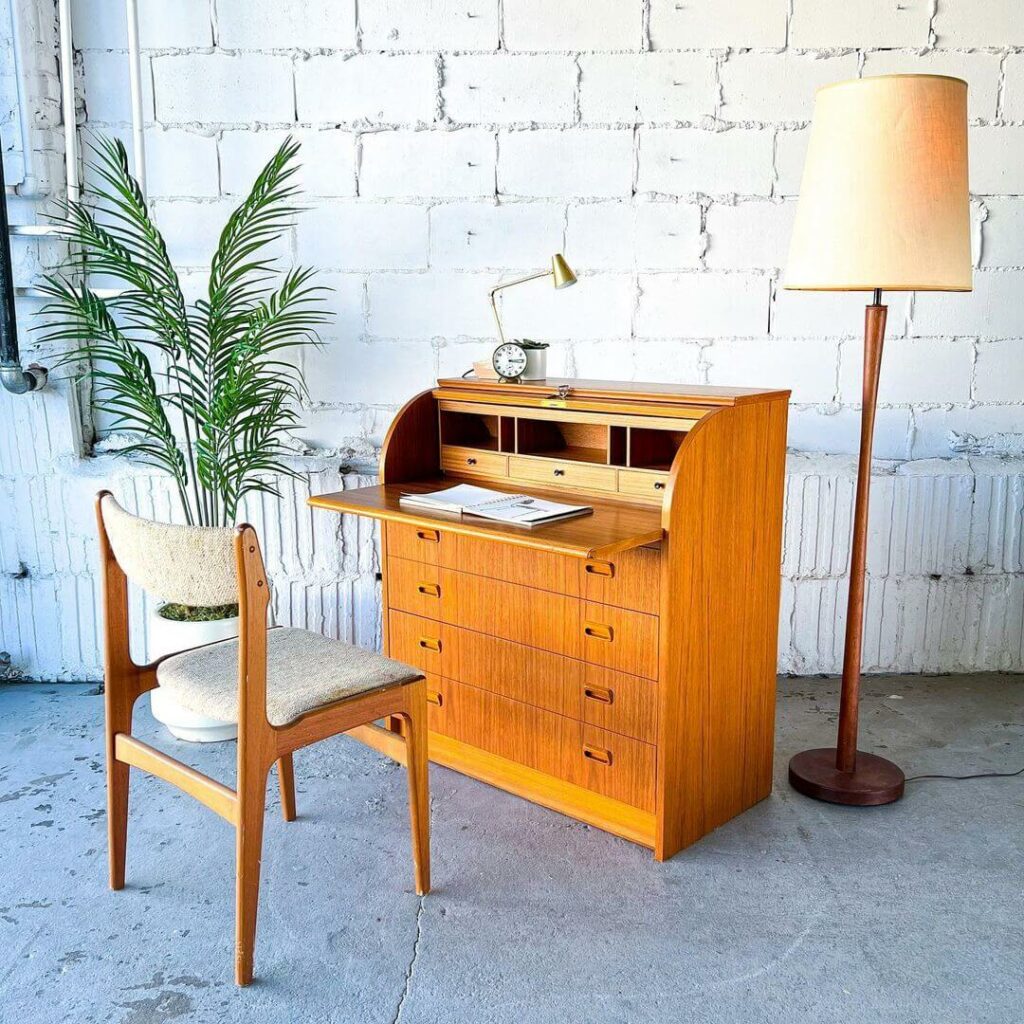
Pros
Cons
10 | Red Oak
Red oak is famous for its strength and beauty, making it an ideal option for desktops. It holds worldwide popularity when it comes to building tabletops, desks, chairs, and other such furniture.
Its rich and dark color and distinctive grain patterns can bring out its quality even more.
Red oak is also strong and dense, holding a rating of 1,260 lbf on the Janka scale. Additionally, it is possible to stain, seal and paint this wood without much resistance; as a result, you can keep extending the lifespan of your red oak desktop.
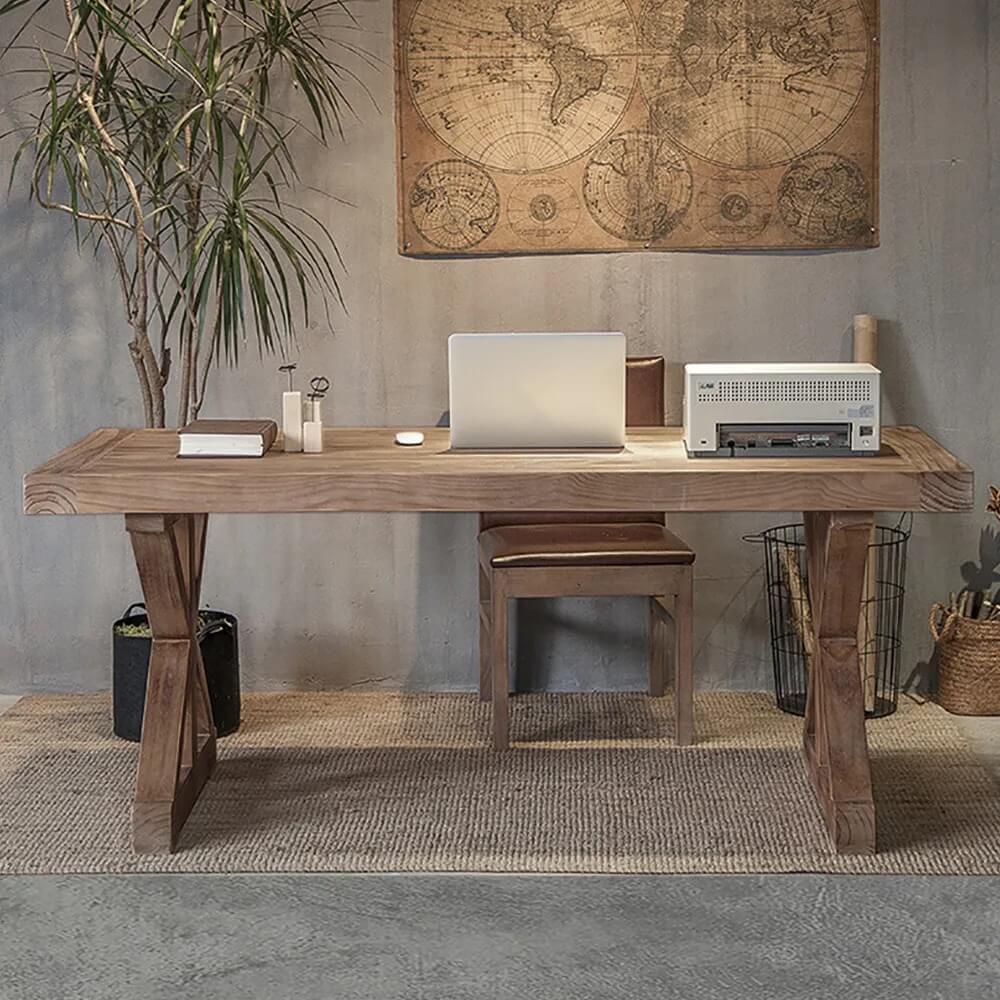
Pros
Cons
11 | MDF
MDF refers to medium-density fiberboard. It is different from the other kinds of wood in that it is made from wood residues like fibers that are combined with binding materials like resin and wax.
The pressure and temperature applied to this combination can then result in a strong and extremely sturdy product.
Although dense, this kind of wood can actually provide plenty of mobility to your desktop, making it well-suited to moving and adjustable desks and tables. This kind of fiberboard also comes with a long lifespan if used in an appropriate manner.
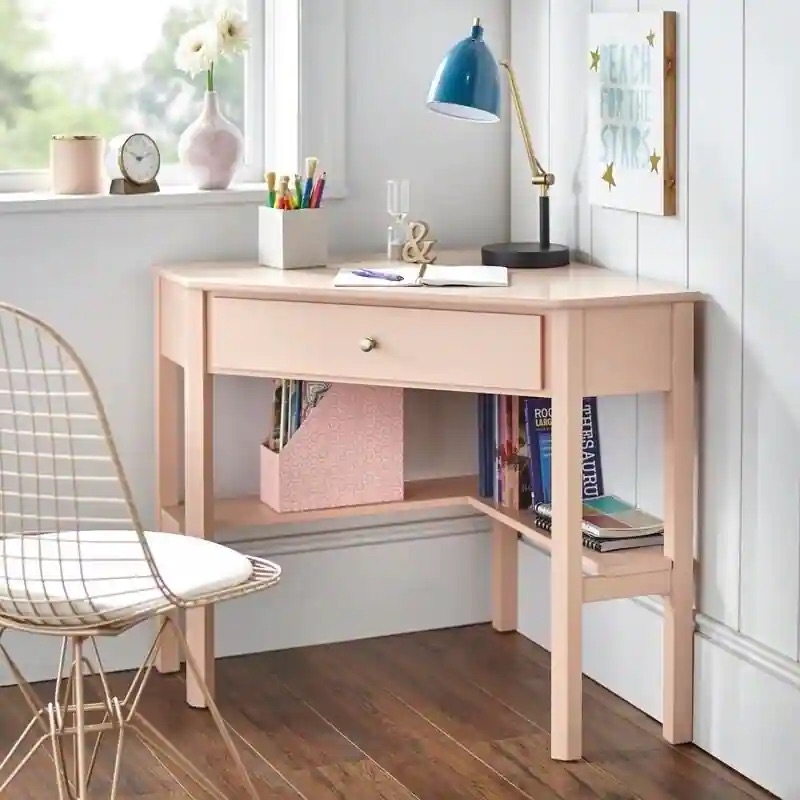
Pros
Cons
12 | Elm
The wood obtained from elm, or elmwood, is extremely rigid, strong, and sturdy. The grains present in this kind of wood are quite coarse and rough, resulting in a textured surface that can lend a unique appearance to your desktop.
Often available in large pieces and quantities, you can make good use of elm for building desktops in bulk, such as for a workplace. Elm has a high degree of tensile strength and is usually great at managing large weights.
Elm tends to come in white, off-white, cream, light brown, as well as darker red-brown colors.
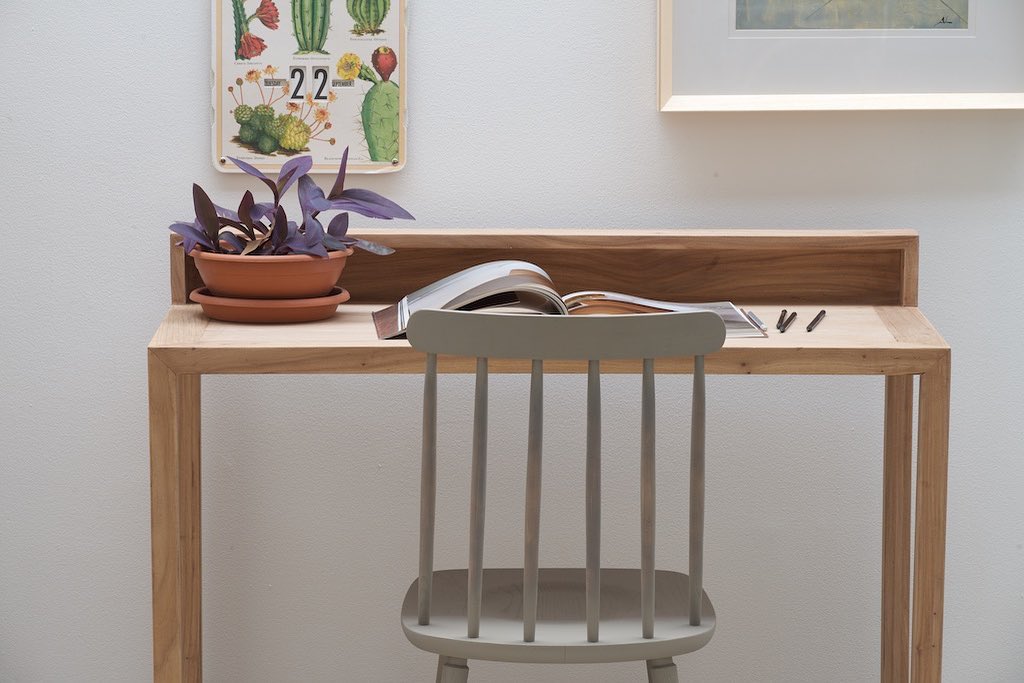
Pros
Cons
13 | Rosewood
Rosewood is a highly sought-after option, especially for desks and chairs. However, it is relatively rare, making it a premium choice if you do find it.
Rosewood is a diverse kind of wood due to its numerous color options that range from light brown to dark red, with many timber pieces also having black stripes and patterns.
Each of these aspects can result in a natural and lovely desktop appearance. High-quality rosewood can perform excellently under pressure while also resisting the push and pull of changing heat levels and humidity.
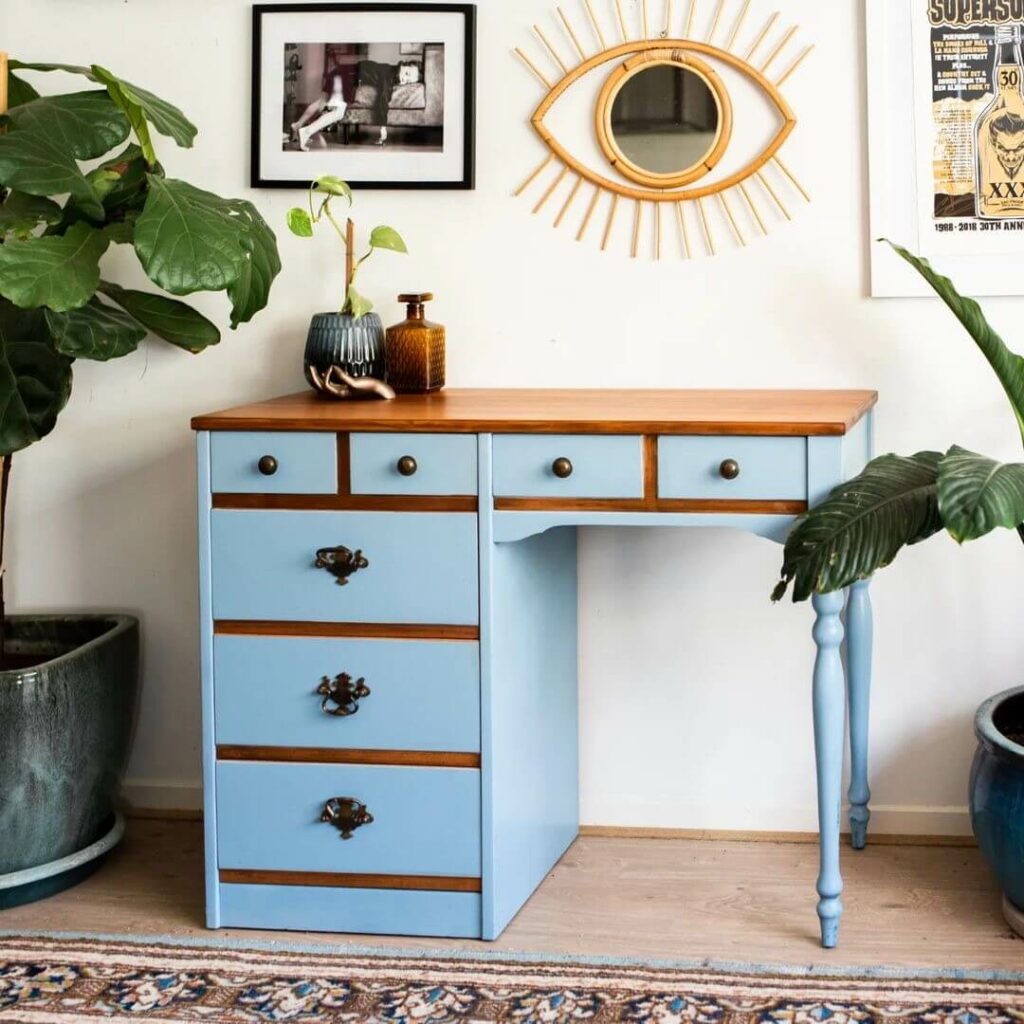
Pros
Cons
14 | Reclaimed Wood
Reclaimed wood is recycled after its original usage in applications such as barns, barrels, buildings, floors, and other construction-type projects.
This kind of reclaimed wood is usually reshaped, cut up, and polished to result in an interesting and beautiful surface, making it suitable for desktops.
It might sound like reclaimed wood has lower strength levels, but it continues to provide solid results while lasting for a long time.
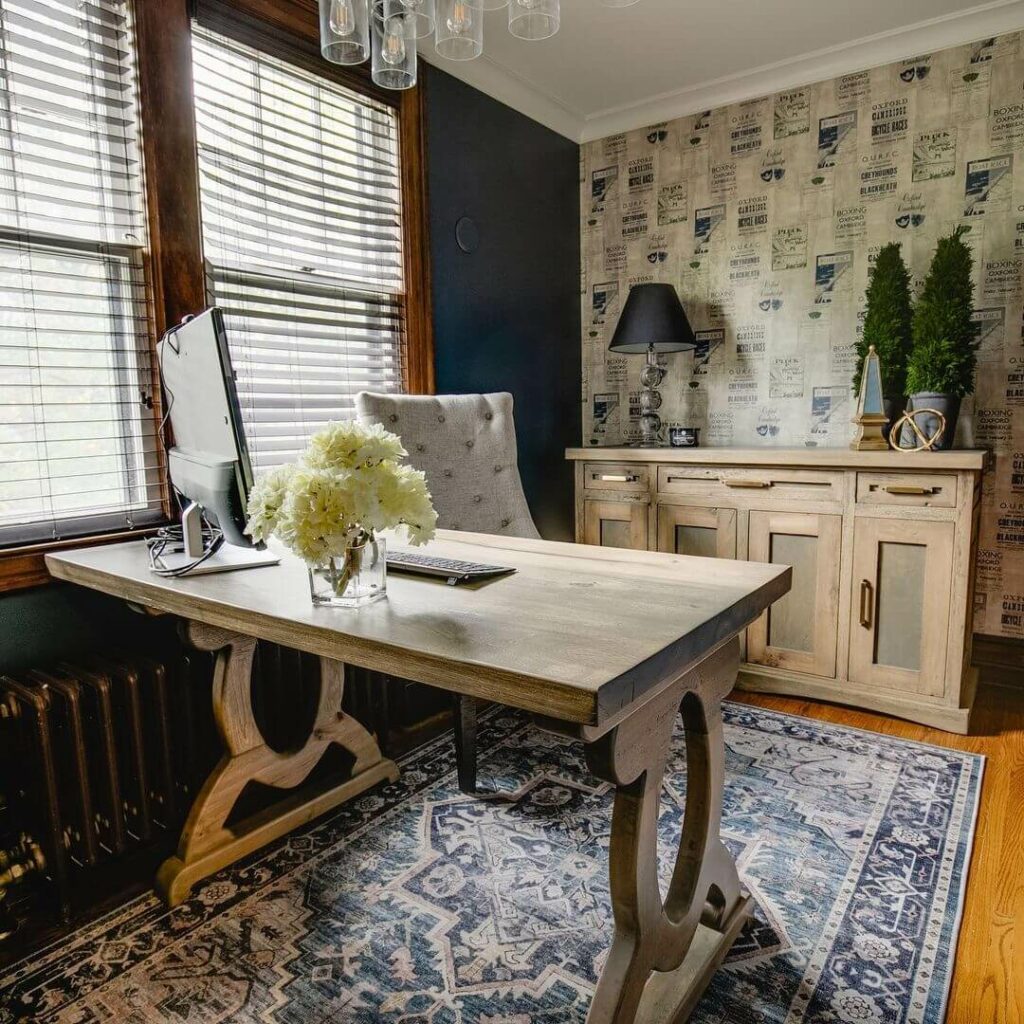
Pros
Cons
15 | white oak
White oak is an incredibly stable and durable kind of wood, making it an excellent option for desktops. It is a kind of hardwood with a density of 1,350 Lbf on the Janka hardness scale and can be used to build anything from kitchen cabinets, floorboards, wood shelves, and of course, desktops.
This timber comes from the white oak or Quercus Alba tree, commonly found in the Eastern United States in central Michigan and southeastern Minnesota.
Interestingly, white oak has varying unique and diverse colors, but typically, it showcases a beautiful light to medium brown color with an olive tone. White oak usually tends to be quite dense with a modulus of elasticity (MOE) of 1,762,000 lbf/in2, which is nearly on par with red oak.
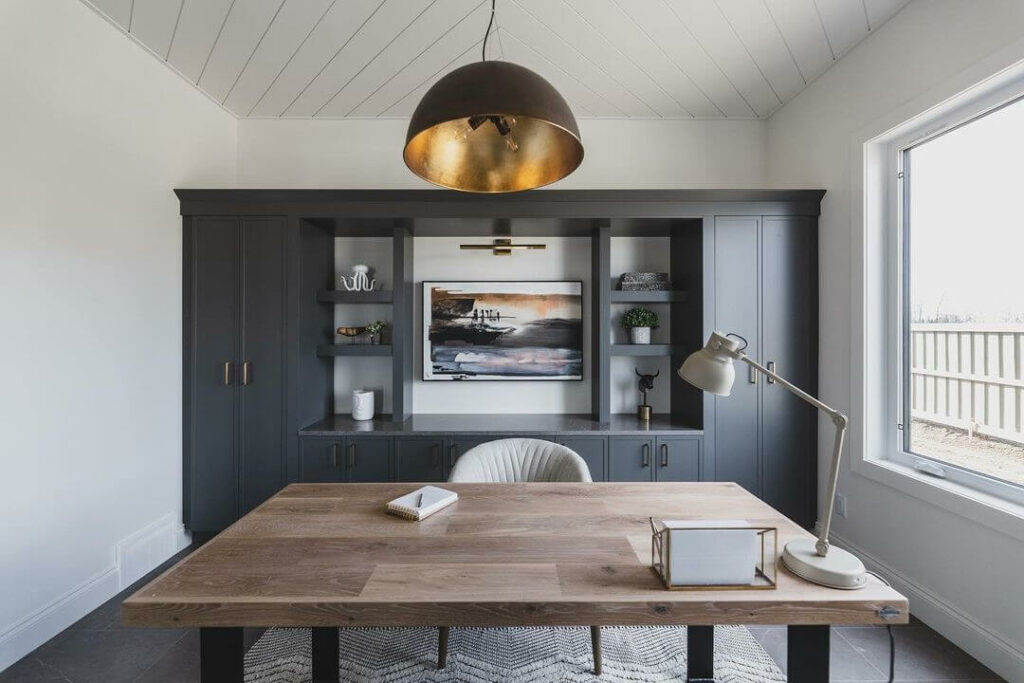
Pros
Cons
16 | Padauk
Padauk wood is a rare kind of wood but can result in an attractive appearance on a desktop and is a fantastic wood for a modular gaming desk and a workstation.
It comes in dark and rich red-brown colors with several grain patterns. It is also an extremely strong and sturdy lumber, thus allowing you to place your work materials on the desk without risk of damage.
Padauk wood is more common for musical instruments, although smaller furniture and display pieces also tend to use this kind of wood.
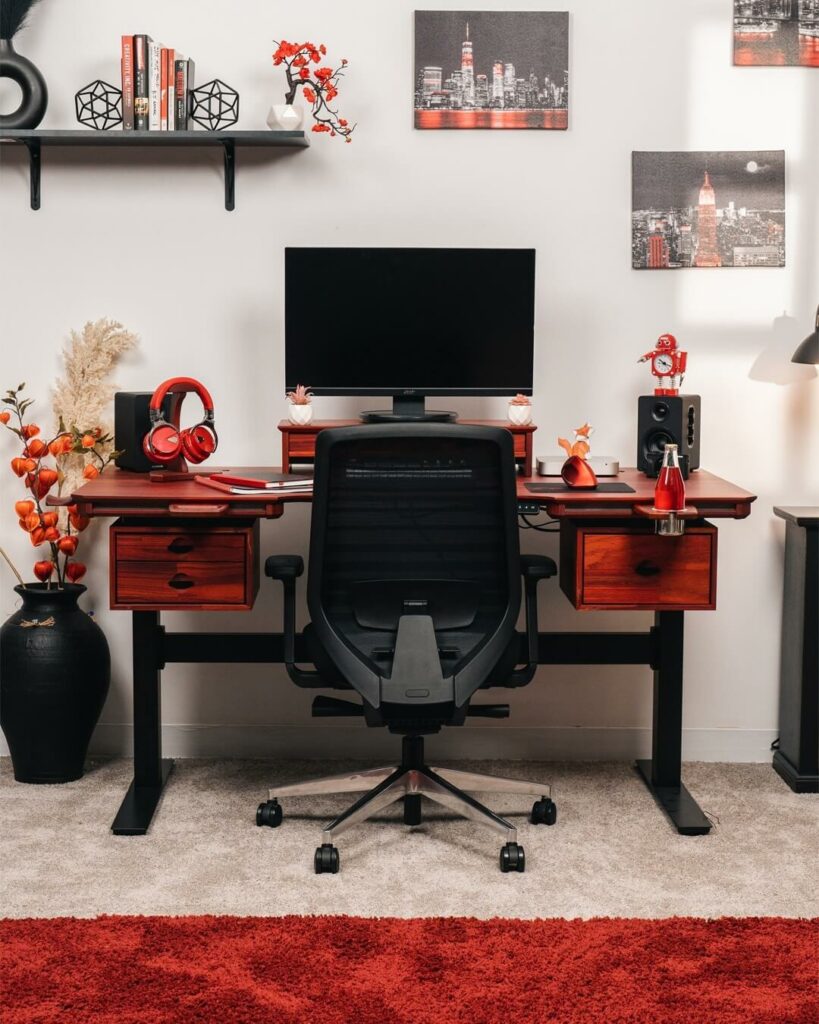
Pros
Cons
DIY Wood Desktop Building Tips
If you want to build your wood desktop on your own, you should take a look at the following tips to help you get started.
- Make sure you gather all the necessary tools, equipment, and materials for your DIY woodworking project.
- You can either cut the wood on your own using a table saw or you can ask a professional to do it for you. Take measurements of the desk so that you can cut the wood into proper sizes.
- Once the wood is ready, place all the pieces on the desk or frame you want to build this desktop.
- Secure all the wood pieces together using clamps and fasteners so that you can work on them easily.
- Attach each piece of wood together using nails and screws until your basic desktop structure is ready. Detach the fasteners only once this is done.
- If you want to make gaps, holes or hollow spaces on the desk to make room for charging points, plugs, and wires, you should carve or drill them out at this point.
- Inspect the wood for any gaps or crevices. Cover them up using glue, epoxy, putty or other suitable material.
- After everything dries, you can take sandpaper of varying grits and use it to smoothen the surface of the wood.
- Add stain and paint. After drying, you can set up the desktop on your desk or work table.
Choose the Right Wood for Your Desktop
There are multiple factors you should keep in mind when choosing the right wood for your desktop. Here are some that can support and aid your decision.
Lumber Cost
The cost of the lumber can vary widely depending on the kind of wood you opt for. Some woods, like cherry and mahogany, are likely to cost you a bit more than others, like elm, cedar, pine, and bamboo.
If you have certain restrictions in place, you should decide on a budget beforehand, after which you can figure out which kind of wood can meet these needs. However, as important as it is to opt for wood that falls within your budgetary expectations, you should also ensure that it is of high quality and looks the way you want it to.
Make sure you account for other costs in the long run too, such as replacement, repairs, durability, and maintenance.
Weight
The weight or density of the wood can make quite a difference when it comes to the overall quality of the wood. The most crucial consideration here should be how you intend to use the desk in the first place. Are you going to use the desktop as a standing desk? Do you intend to place multiple objects and materials on it?
For basic uses, you should consider lighter wood with a lower density. This also applies to standing desktops since you need to mount them higher. Lighter ones can also be easier to move around.
On the other hand, for desktops of standard height and more frequent usage, you can consider heavier options like walnut. These can help if you do not intend to move your desk around too much.
Color
The color of the wood is vital to keep in mind, especially since it will form an essential part of your workspace or room. You should ensure that the color works well with the rest of the room’s colors while also responding well to natural or artificial light.
Some types of wood are naturally dark, giving a rich, deep and stable presence in the room. However, you might not be able to alter the colors too much here, whereas this can be easier to do with natural wood with a lighter tone.
Note that staining and painting can affect the general appearance and look of the desktop too.
Grain
Wood grain refers to the wood cells and fibers and how they are arranged in a particular type of wood. On this basis, they can result in various patterns and shapes on the wood you intend to use for your desktop. This can lend some color, shade, and texture to the wood.
The grain of the wood also tends to impact the strength and quality of the wood and how you align and cut the wood.
The grain you opt for should depend on the kind of look that you intend to achieve.
Durability
Your wood should be of good quality to ensure that it can provide durability and longevity to your desktop. Some aspects you should look for here include the wood’s hardness and weather resistance levels to ensure that it can survive both manmade and natural alterations.
The wood should withstand and resist decay and degradation, even though a bit of expansion and contraction is natural here.
You will also need to take some steps of your own to maintain the wood’s durability, such as controlling the temperature and humidity, avoiding breakage, minimizing spills, and more.
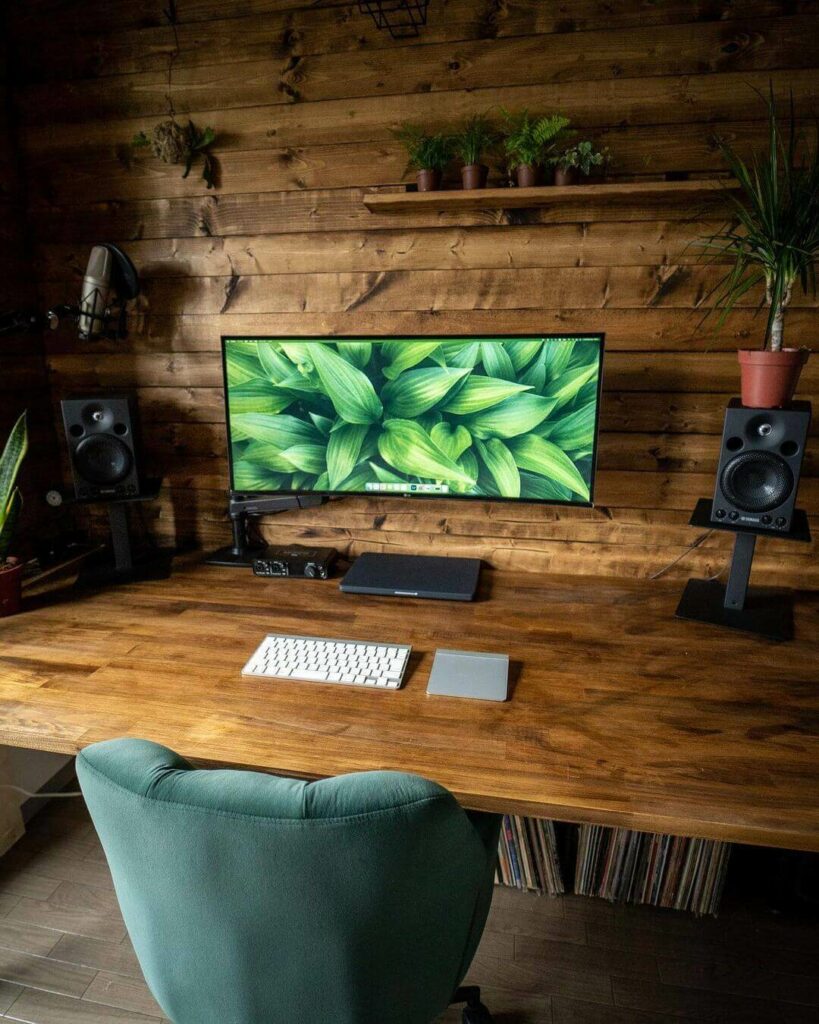
Materials:
Tools:
The Bottom Line
Light and sturdy options can suit your desktop quite well since they can deliver comfort, color, and strength. Selecting wood for desktops as opposed to wood for bed frames differs greatly in terms of softwoods vs hardwoods.
Key Takeaways:
Ultimately, the wood you choose should reflect your own needs while also being suitable to match the weight and frequency of usage.

